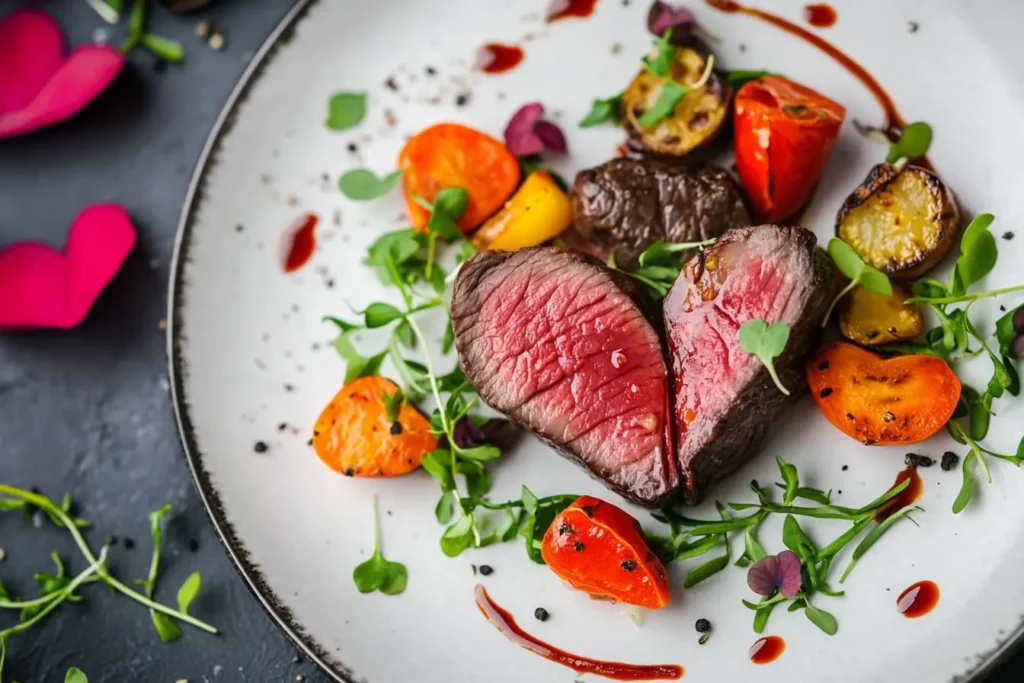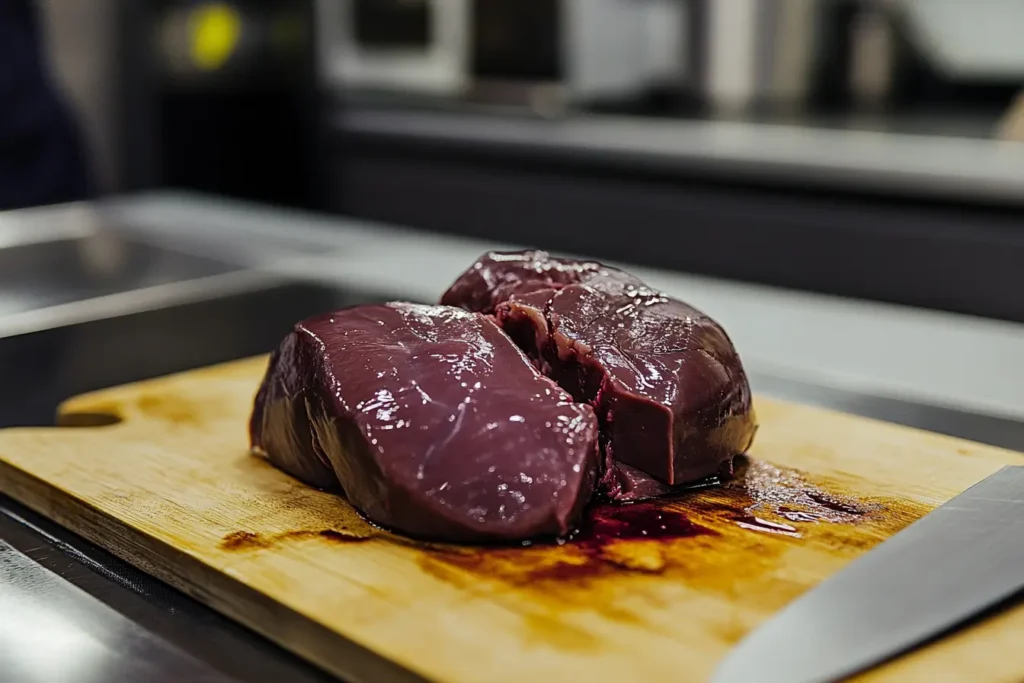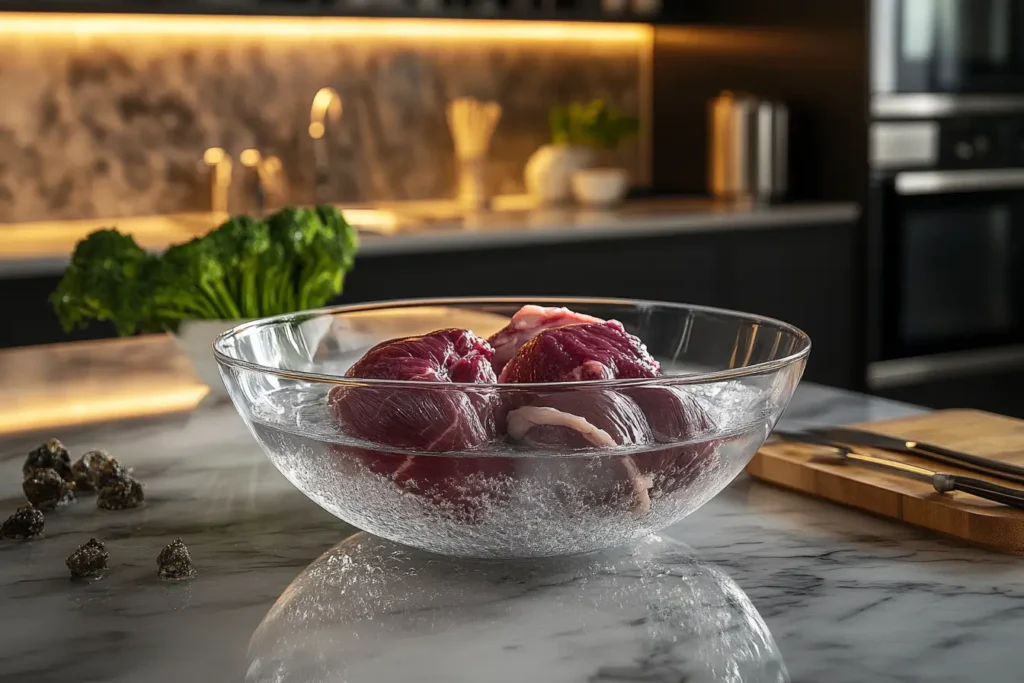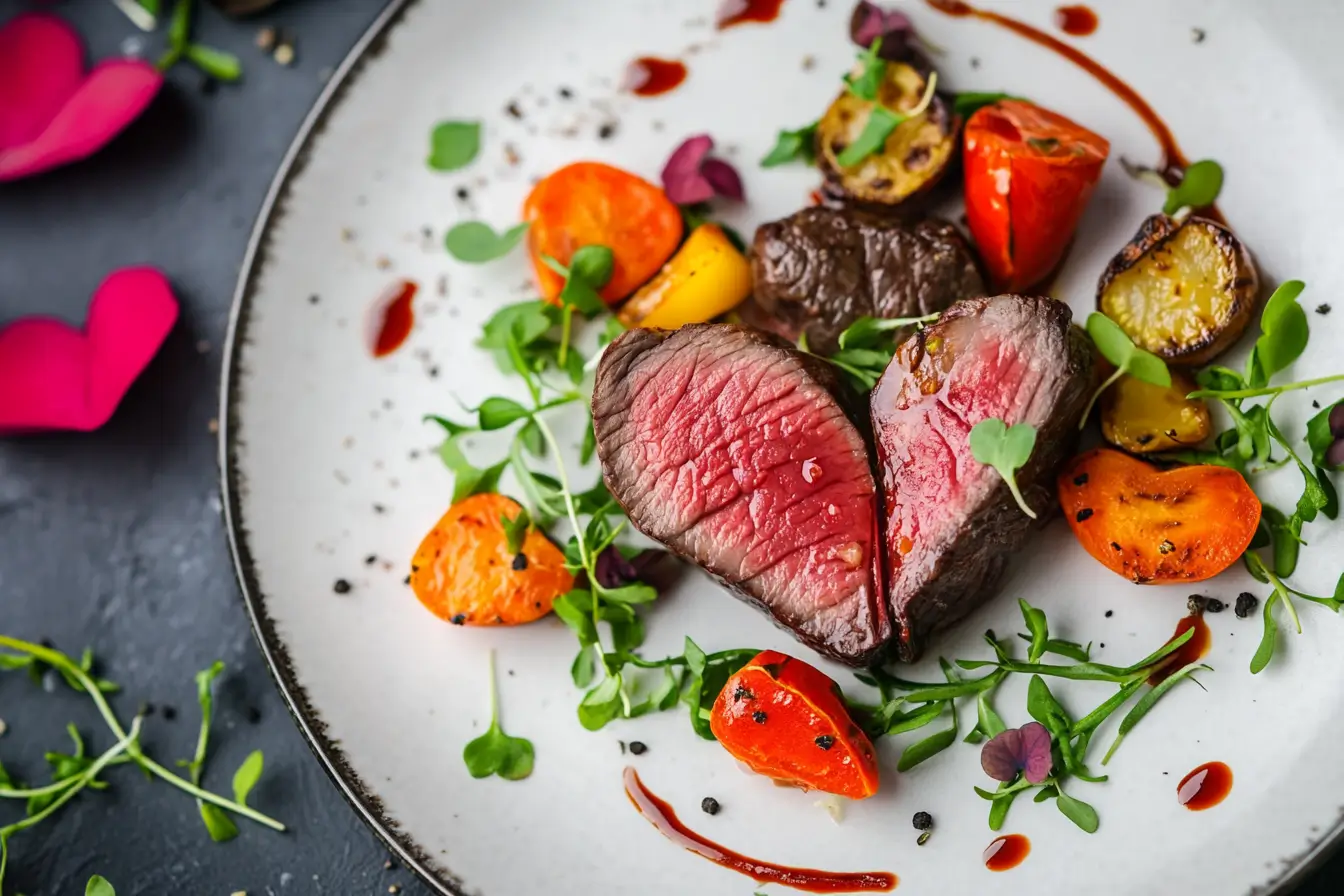
Beef heart is a highly nutritious and flavorful cut of meat, but many wonder whether soaking beef heart before cooking is necessary. This step can make a big difference in tenderness and flavor, and in this guide, we’ll explore everything you need to know about soaking, preparing, and cooking beef heart to perfection.
Understanding Beef Heart: An Underrated Delicacy
Beef heart has been a part of traditional cuisines worldwide, yet it often gets overlooked today. Why? Maybe because it’s not a familiar choice for many or simply because people don’t know how to prepare it. But trust me, once you get past the idea of it being an organ meat, you’ll discover a delicious, nutrient-packed ingredient.
Nutritional Benefits of Beef Heart
Think of beef heart as nature’s multivitamin, since it is rich in essential nutrients like iron, zinc, selenium, and B vitamins—especially B12, which supports both energy and brain health. Furthermore, it’s loaded with protein, making it an excellent addition to an active lifestyle. In fact, few other foods offer such a potent combination of nutrients in a single serving.
However, the superstar nutrient here is Coenzyme Q10 (CoQ10). This powerful antioxidant not only helps boost heart health but also supports energy production. How fitting is that—a heart to support your heart? 🫀
Why Beef Heart Deserves a Spot in Your Diet
If you’re looking to eat sustainably, reduce food waste, or try something different, beef heart is a fantastic choice. It’s more affordable than many cuts of beef and offers just as much, if not more, flavor and nutrition. Plus, it’s versatile—you can grill it, fry it, or toss it into stews.
“Beef heart is one of the best ways to incorporate nutrient-dense organ meats into your diet without sacrificing flavor or breaking the bank.”
Preparing Beef Heart for Cooking

Now that we’ve piqued your interest, let’s get to the nitty-gritty: preparing beef heart. It’s not as intimidating as it seems. All you need is a little patience and a sharp knife.
Cleaning and Trimming Beef Heart: Step-by-Step Guide
The first thing you’ll notice is that beef heart has a tough outer membrane and some fat that needs to be removed. In order to simplify the process, here’s a quick guide that you can easily follow:
- Rinse It First: Give the heart a good rinse under cold water to remove any residual blood.
- Remove the Outer Membrane: Use a sharp knife to peel away the silvery membrane—it’s tough and not great for eating.
- Trim the Fat: Trim off the white fatty parts. A little fat adds flavor, but too much can make it chewy.
- Cut It Open: Open the heart like a book, and remove any remaining veins or connective tissue.
You’ll be left with clean, lean meat that’s ready to soak (if you choose to) or cook right away.
Should Beef Heart Be Soaked Before Cooking? Pros and Cons
Ah, the big question! Soaking is often recommended for organ meats, and beef heart is no exception. But is it necessary?
The Pros of Soaking Beef Heart
- Tenderizes the Meat: Soaking helps soften the fibers, making the heart more tender.
- Removes Impurities: It helps draw out residual blood and any strong, gamey flavors.
- Adds Flavor: Depending on your soaking solution, it can enhance the taste.
The Cons of Soaking Beef Heart
- Time-Consuming: If you’re in a hurry, soaking adds an extra step.
- Flavor Loss: Some argue that soaking can dilute the natural beefy flavor.
So, should you soak? It’s a personal choice. If you’re new to cooking beef heart or worried about the taste, soaking is a good idea.
Types of Soaking Solutions: Saltwater, Vinegar, or Buttermilk
Now, let’s talk about what to soak it in. Each solution has its own perks:
- Saltwater: The most common choice, saltwater tenderizes the meat while keeping its natural flavor intact.
- Vinegar: Perfect for cutting through strong flavors. A quick soak in vinegar and water (about 30 minutes) does wonders.
- Buttermilk: Adds a subtle tanginess and softens the texture beautifully.
How Long Should You Soak Beef Heart?
Timing is crucial! If you soak it for too short a time, you might not notice any difference; however, if you soak it for too long, you risk losing flavor. As a result, a good rule of thumb is:
- Saltwater: 2–4 hours.
- Vinegar: 30 minutes to 1 hour.
- Buttermilk: 2–6 hours.
“For best results, soak the beef heart in the fridge to maintain freshness and avoid bacteria growth.”
Cooking Methods for Beef Heart
Once you’ve cleaned and prepped your beef heart, the fun part begins—cooking! Beef heart is versatile, but it’s important to pick the right method for your taste and desired texture. Let’s explore some popular cooking methods that bring out the best in this underrated cut.
Grilling Beef Heart: Tips for Perfect Results
If you’re a fan of smoky, char-grilled flavors, then grilling is definitely the way to go. Moreover, beef heart’s firm texture holds up beautifully on the grill, and it also absorbs marinades like a sponge, enhancing its flavor even further.
How to Grill Beef Heart
- Marinate First: A simple marinade of olive oil, garlic, lemon juice, and herbs works wonders.
- Preheat the Grill: Get your grill nice and hot (about 400–450°F).
- Slice Thin: Cut the heart into thin steaks for even cooking.
- Quick Cooking: Grill each side for 3–4 minutes. You want a medium-rare center—overcooking can make it tough.
“Think of grilling beef heart like grilling a good steak—hot and fast is the secret to juicy, tender results.”
Slow Cooking and Braising Beef Heart for Tenderness
For those who love fall-apart tender meat, slow cooking or braising is undoubtedly the ideal choice. Not only do these methods let the connective tissue break down, but they also result in a rich and hearty dish that’s perfect for comfort food lovers.
Braising Beef Heart
- Sear It First: Brown the heart in a hot pan to lock in the flavor.
- Add Aromatics: Throw in onions, garlic, carrots, and your favorite herbs.
- Simmer Low and Slow: Cover with beef broth or red wine and cook on low heat for 3–4 hours.
Pan-Frying Beef Heart: Quick and Flavorful
Pan-frying is perfect if you’re short on time but still want a flavorful meal. Thin slices of beef heart cook up quickly and develop a beautiful crust.
Steps for Pan-Frying
- Season Generously: Salt, pepper, and a touch of smoked paprika work wonders.
- High Heat, Quick Sear: Heat oil in a pan until it’s shimmering, then sear the slices for 2–3 minutes per side.
- Rest Before Serving: Let the meat rest for a few minutes to lock in the juices.
Using Beef Heart in Stews, Soups, and Salads
“Don’t overlook beef heart, especially as an addition to hearty dishes like stews and soups. If you’ve taken the step of soaking beef heart beforehand, its robust flavor shines even more. Additionally, it pairs beautifully with root vegetables, beans, and grains for a well-rounded and satisfying meal.”
Ideas for Incorporation
- Hearty Stew: Add chunks of beef heart to a slow-cooked beef and barley stew.
- Flavorful Soup: Dice it small and toss it into a spicy beef and vegetable soup.
- Salad Topper: Grill or pan-fry slices and add them to a fresh arugula and citrus salad.
Common Problems When Cooking Beef Heart and Their Solutions
Cooking beef heart comes with its challenges, but don’t worry—I’ve got your back! Here are some common issues and how to tackle them.
Overcooking: How to Avoid Tough and Chewy Meat
Beef heart is lean, so overcooking can turn it into a rubbery mess. The key is to cook it quickly over high heat or slow-cook it for long periods.
Solution:
- For quick methods like grilling or pan-frying, aim for medium-rare.
- If you’re braising or slow-cooking, ensure it’s fully submerged in liquid to stay moist.
Undercooked Beef Heart: Ensuring Food Safety
While beef heart can be cooked rare, it’s essential to reach a safe internal temperature (145°F for medium-rare) to eliminate any potential bacteria.
Solution:
- Use a meat thermometer to check doneness.
- Let the meat rest for 5 minutes after cooking to allow the temperature to stabilize.
Dealing with Strong Flavors: Techniques to Balance the Taste
Some people find the flavor of beef heart a bit too gamey. Don’t worry—this is an easy fix!
Solution:
- Soak It: As discussed earlier, soaking in buttermilk or vinegar helps.
- Season Well: Use bold spices and herbs like cumin, rosemary, or thyme.
- Pair It Wisely: Serve with sweet or tangy sides, like caramelized onions or a citrus glaze.
“Cooking beef heart is like making a masterpiece—patience, care, and the right tools make all the difference.”
Enhancing the Flavor of Beef Heart Dishes
When it comes to beef heart, the right seasonings and pairings can transform it from simple to sensational. Let’s talk flavor!
Best Marinades and Seasonings for Beef Heart
Marinades not only add flavor but also tenderize the meat. Here are some go-to options:
- Garlic-Lemon Marinade: A classic combination that enhances beefy flavors.
- Spicy Soy Marinade: Soy sauce, ginger, chili flakes, and a touch of honey create a bold, savory profile.
- Herbaceous Blend: Blend fresh herbs like parsley, cilantro, and oregano with olive oil and lime juice for a refreshing kick.
Pairing Beef Heart with Side Dishes and Beverages
Choosing the right sides and drinks can elevate your beef heart dish to a full dining experience.
Side Dish Ideas
- Roasted Vegetables: Sweet potatoes, carrots, or Brussels sprouts are great options.
- Creamy Polenta: Its smooth texture complements the robust heartiness of the meat.
- Fresh Salads: A crisp green salad with a tangy vinaigrette provides a nice contrast.
Beverage Pairings
- Wine: A bold red like Malbec or Cabernet Sauvignon works beautifully.
- Beer: A stout or porter adds depth to the flavors.
Benefits and Risks of Eating Beef Heart
Beef heart offers plenty of benefits, but like anything in life, it has its downsides too. Let’s take a deep dive into the pros and cons so you can enjoy it with confidence.
Health Benefits of Organ Meats: Beef Heart in Perspective
Organ meats like beef heart are nutritional heavyweights, offering a variety of health benefits. For instance, they are packed with essential vitamins, minerals, and protein, making them a smart addition to your diet. Furthermore, beef heart stands out due to its abundance of Coenzyme Q10 (CoQ10), which not only boosts energy levels but also supports cardiovascular health.
If you’re eager to explore the world of beef heart cooking, this beef heart recipe guide is a fantastic place to start. It’s filled with creative recipes and tips for beginners.
Potential Risks: Cholesterol and Other Concerns
Although beef heart is packed with nutrients, it is also relatively high in cholesterol. Therefore, for individuals managing heart conditions or high cholesterol, moderation is essential. Additionally, it’s a good idea to consult with a healthcare professional if you’re unsure how organ meats fit into your dietary needs.
Sustainable Eating: Ethical Aspects of Consuming Organ Meats
Eating organ meats, such as beef heart, not only contributes to reducing food waste but also supports sustainability efforts. By utilizing cuts that are often overlooked, you help honor the animal and, at the same time, reduce the environmental impact of your meals.
Reducing Food Waste Through Organ Meat Consumption
Incorporating organ meats into your diet is not only an excellent way to reduce waste but also a chance to explore new flavors. For example, beef heart, often underappreciated, is both a flavorful and nutrient-rich option. Moreover, it’s versatile and affordable, making it a great addition to a sustainable and budget-friendly diet.
For more inspiration, check out this ultimate guide to beef heart recipes, which offers step-by-step instructions to make the most out of this nutritious cut.
Sourcing High-Quality Beef Heart: What to Look For
When buying beef heart, quality matters. Look for:
- Grass-fed beef hearts for richer flavor and nutritional benefits.
- Organic certifications to ensure the meat is free from harmful additives.
- Local sources like farmers’ markets or reputable butchers.
FAQs About Cooking Beef Heart
Here are some common questions about Soaking beef heart to help you get started with confidence.
1. Should Beef Heart Be Soaked Before Cooking?

Yes, soaking beef heart is often recommended because it helps tenderize the meat while also reducing gamey flavors. Furthermore, popular soaking solutions such as saltwater, vinegar, and buttermilk can significantly enhance both the taste and texture. Depending on your specific preferences, soaking for 2–6 hours can make a noticeable difference, particularly if you are aiming for a softer, more flavorful cut of meat.
2. What’s the Best Way to Cook Beef Heart?
Beef heart is incredibly versatile! For instance, it can be grilled, pan-fried, braised, or slow-cooked to suit various recipes. If you’re short on time, slicing it thin and searing it on high heat is a quick and flavorful option. However, if you’ve taken the step of soaking beef heart beforehand, you’ll notice an even more tender texture and enhanced flavor. On the other hand, if you have more time, braising allows the meat to develop a melt-in-your-mouth texture, making it ideal for hearty dishes.
For detailed cooking techniques, explore this beef heart recipe guide.
3. Is Beef Heart Healthy?
Absolutely! It’s high in protein, iron, and CoQ10, which are excellent for energy, heart health, and immune support. However, it’s also high in cholesterol, so consume it in moderation.
Conclusion
“Beef heart may not be a mainstream ingredient, but it’s worth giving it a shot. Whether you choose soaking beef heart before cooking or skip that step, this nutrient-dense organ meat can easily become a regular in your kitchen, offering incredible flavor, sustainability, and health benefits.”
If you’re ready to take the plunge, don’t miss this step-by-step beef heart recipe guide. It’s packed with creative ideas to help you master this underrated delicacy.
“Trying something new in the kitchen can feel like an adventure—and cooking beef heart might just surprise you with its flavor and versatility.”
So, why not experiment with it in your next meal? Your taste buds—and the planet—will thank you! 🌎🥩

